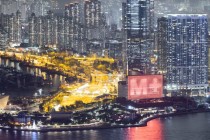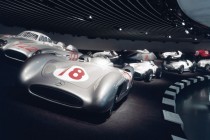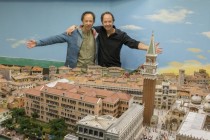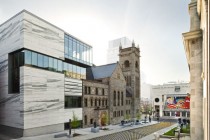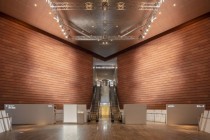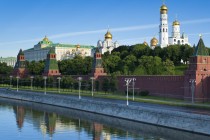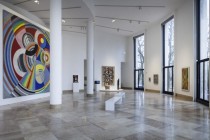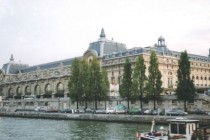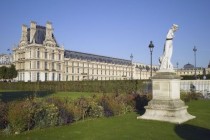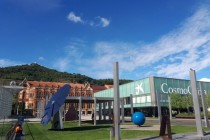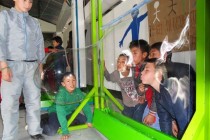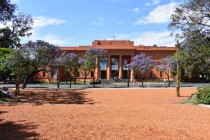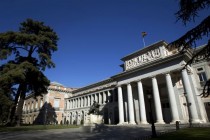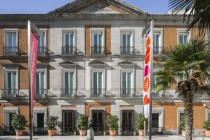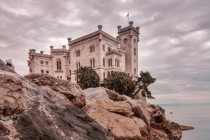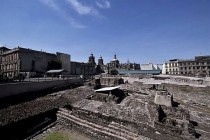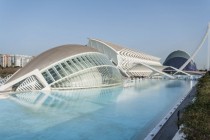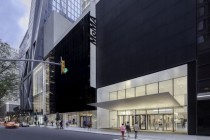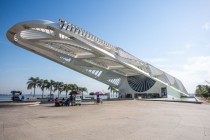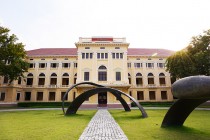| M+ |
296. |
178 |
China |
Hong Kong |
|
|
Art
|
More |
M+ opened in 2021 (https://www.museumworldranking.net/news/m-celebrates-its-opening-ahead-of-its-public-launch,114). M+ is part of the West Kowloon Cultural District.
M+ showcases a pre-eminent collection of twentieth- and twenty-first-century visual culture within an Asian context, encompassing the disciplines of visual art, design and architecture, and moving image from Hong Kong, Greater China, Asia, and beyond. The collection spans from 1895 to current.
The M+ Collection and M+ Sigg Collection include 8,219 works as of September 2022.
The 65,000-square-metre museum building comprises 17,000 square metres of exhibition space across thirty-three galleries.
M+, Hong Kong
Photo: Iwan Baan
© Herzog & de Meuron
Courtesy of Herzog & de Meuron
|
| Machu Picchu |
181. |
177 |
Peru |
Machu Picchu |
|
|
Archaeological park
|
More |
Machu Picchu - the best preserved city of the Incas.
Built from around 1450, abandoned in 1572, which was associated with the appearance of the conquistadors.
The most important monuments:
- Intihuatana stone,
- Temple of the Sun or Torreon,
- Room of the Three Windows,
- a special cave Inti Mach'ay.
Artifacts from Machu Picchu are on display at the Museo Machu Picchu, La Casa Concha.
|
| Madame Tussauds |
364. |
226 |
United Arab Emirates |
Dubai |
|
|
Wax museum
|
More |
Madame Tussauds was founded by Marie Tussaud, a French artist specializing in wax sculpture. The official opening of the museum's first permanent exhibition took place in London in 1835.
Madame Tussauds has many branches around the world. Current locations:
America: Hollywood, Las Vegas, Nashville, New York, Orlando
Europe: Amsterdam, Berlin, Blackpool, Budapest, Istanbul, London, Prague, Vienna
Asia: Beijing, Chongqing, Hong Kong, Shanghai, Singapore, Tokyo, Wuhan
Middle East: Dubai
Australia: Sydney
Madame Tussauds is known for its collections of wax figures that depict famous people from various walks of life. The collection includes:
1. Movie and music stars: Figures of famous actors, musicians and singers. There are figures of stars such as Marilyn Monroe and Elvis Presley.
2. Historical and political figures: Figures depicting famous historical figures such as Mahatma Gandhi, Winston Churchill and Martin Luther King Jr., as well as contemporary politicians such as Xi Jinping, Donald Trump, Emmanuel Macron,
3. Athletes: Famous personalities from the world of sports, such as Usain Bolt, Cristiano Ronaldo, or Muhammad Ali.
4. Pop culture and fiction characters: Characters from movies, comics and literature, such as Spider-Man, James Bond and heroes from Marvel and Star Wars films.
5. Scientists and inventors: Figures depicting famous scientists and inventors such as Albert Einstein, Nikola Tesla and Isaac Newton.
6. Members of the Royal Family: Figures representing the British royal family, including King Charles III, Prince William, Duchess Kate and others.
Madame Tussauds' collections are regularly updated to reflect current events and changing trends in popular culture. The museum also has interactive exhibitions that allow visitors to get to know and interact with the figures better.
It is estimated that there are several thousand wax figures in the global Madame Tussauds network. As for the number of exhibits on display, each museum usually has from several dozen to several hundred wax figures on display at any given time. For example, the main location in London usually has around 250-300 figures on display.
Madame Tussauds' main location in London covers approximately 5,500 square meters. The exhibition area in London is approximately 2,000-3,000 square meters.
|
| Mercedes-Benz Museum |
224. |
210 |
Germany |
Stuttgart |
|
|
Motorization
|
More |
The Mercedes-Benz Museum was opened in 2006.
The museum presents 130 years of history of the Mercedes-Benz brand and associated brands.
On an area of 16,500 square meters, more than 160 vehicles and nearly 1,400 other exhibits are on display.
|
| Metropolitan Museum of Art |
5. |
552 |
USA |
New York |
|
|
Art
|
More |
The oldest and largest American museum. Founded in 1870.
The collections are divided into thematic sections covering the history of world art: painting, applied art, military, musical instruments, photography.
The collection of paintings includes works of the world's greatest artists. The collection's decoration is the canvas of Dutch master Rembrandt. Italian paintings are represented by paintings e.g. Botticelli and Rafael.
The museum has an excellent collection of 19th-century French painting e.g. Manet, Monet, Renoir, van Gogh, Cézanne.
|
| Mevlana Museum |
255. |
342 |
Turkiye |
Konya |
|
|
Mausoleum
|
More |
Mevlana Museum is the mausoleum of Jalal ad-Din Muhammad Rumi, a Persian Sufi mystic also known as Mevlâna; original lodge of Mevlevi whirling dervishes. The museum was opened in 1927.
|
| Middelheim Museum |
330. |
188 |
Belgium |
Antwerp |
|
|
Modern and contemporary... art
|
More |
The Middelheim Museum (Middelheimmuseum) was opened in 1951 as the open-air sculpture museum. Then, for the needs of the museum, buildings were built successively: the Braem Pavilion, depot in Middelheim-Hoog, and the Het Huis pavilion (The house). The Middelheim museum has a branch called Art in the City active in all districts of Antwerp.
The collection consists of about 400 works of art. including works by artists such as Auguste Rodin, Constantin Meunier, Émile-Antoine Bourdelle, Aristide Maillol, Arturo Martini, Hans Arp, Ossip Zadkine, Barbara Hepworth, Henry Moore, Alexander Calder.
The Middelheim Museum covers an area of 27 hectares.
|
| Military Museum of the Chinese People's Revolution |
180. |
170 |
China |
Beijing |
|
|
Military
|
More |
The Military Museum of the Chinese People's Revolution (Chinese Military Museum) opened to the public in 1960.
The museum collects, among other things, equipment from the Chinese space program, such as satellites and a two-seater orbital capsule, jet fighters, rockets, rocket launchers, cruise missiles, artillery, fleets, tanks, armored personnel carriers, anti-aircraft weapons, small arms, ammunition, military uniforms, flags , medals, badges, seals, coins, documents.
Among the collected objects you can see: Qin Terracotta Warriors, cars of Zhu De and Mao Zedong, Chinese first atomic bomb, A Dongfeng 2 (CSS-1) medium-range balltistic missile.
The collected collections span 5,000 years of Chinese history.
The museum has over 180,000 exhibits.
The museum building covers an area of 153,000 square meters, of which approximately 60,000 square meters are exhibition space.
|
| Miniatur Wunderland |
377. |
250 |
Germany |
Hamburg |
|
|
Miniature
|
More |
Miniatur Wunderland the world's largest model railway was founded in 2000.
Miniatur Wunderland depicts a variety of scenes and landscapes from around the world, including cities, ports and airports.
Rented space 10,000 square meters.
Layout size 1.610 square meters.
1.166 trains.
Track Length 16,491 meters.
10,330 cars.
52 planes.
4,669 buildings.
289,410 figures.
Photo: Miniatur Wunderland Hamburg
|
| Minneapolis Institute of Art |
263. |
238 |
USA |
Minneapolis |
|
|
Art
|
More |
The Minneapolis Institute of Art (Mia) was founded in 1883.
More than 90,000 works of art represent 20,000 years of world history.
Mia's collection includes art from the Americas, Asia (ceramics, bronzes, jade), Africa and Oceania. Painting (paintings by e.g. El Greco, Rembrandt, Henri Matisse, Vincent van Gogh, Paul Gauguin), sculpture, graphics, drawing, decorative art, contemporary art, photography and new media.
About 5 percent of the total collection is on permanent exhibitions.
Mia is the owner of Purcell-Cutts House.
|
| Mishkan Museum of Art Ein Harod |
389. |
232 |
Israel |
Ein Harod |
|
|
Art
|
More |
The Mishkan Museum of Art Ein Harod was founded in 1937.
The museum has collections of Jewish art, Israeli art and Judaica.
Jewish art includes painting, sculpture, graphics and photography created in the second half of the nineteenth century and the first half of the twentieth century. These are works by, among others, Jozef Israëls, Leopold Horowitz, Mauricio Gottlieb, Shmuel Hirschenberg, Isidor Kaufmann, Max Liebermann, Yitzhak Levitan, Moïse Kisling.
The museum collection also includes works by contemporary Israeli artists who have been working since the beginning of the 20th century.
The Judaica collection includes religious utensils from the 18th century to the present day, from Jewish communities around the world.
The museum has collected over 16,000 works.
|
| Mont Saint-Michel |
244. |
189 |
France |
Mont-Saint-Michel |
|
|
Temple, monument
|
More |
Mont Saint-Michel rocky tidal island with church-abbey and "Merveille" (a monastery built between 1211-1228 in the Gothic style). The origins of the monastery date back to the 8th century. The entire medieval building is surrounded by fortifications from the 13th and 15th centuries.
Mont Saint-Michel area 97 ha, highest point above sea level 92 meters.
Mont Saint-Michel has been a monument since 1874. There are three museums in it.
|
| Montreal Museum of Fine Arts |
106. |
179 |
Canada |
Montreal |
|
|
Art
|
More |
The Montreal Museum of Fine Arts (MMFA) founded in 1860.
The Montreal Museum of Fine Arts has five pavilions that showcase archeology and ancient art, the international art collection, Quebec and Canadian art, modern and contemporary art, decorative arts and design. The international art collection includes works by, among others, Rembrandt, Dürer, El Greco, Goya, Delacroix, Cézanne, Matisse, Miró, Monet, Picasso, Renoir, Rodin, Dalí, Moore. The collection also includes: Coptic fabrics, English porcelain, Japanese incense boxes and stained glass.
The entire collection includes over 43,000 exhibits.
The total area is 53,095 square meters, of which the exhibition area is 13,000 square meters.
Claire and Marc Bourgie Pavilion, exterior view. The Montreal Museum of Fine Arts. Photo MMFA, Michel Dubreuil
|
| Mori Art Museum |
97. |
251 |
Japan |
Tokyo |
|
|
Art
|
More |
Mori Art Museum founded in 2003.
MAM does not have a permanent exhibition. Organizes temporary exhibitions of contemporary artists, mainly Asian.
Center Atrium
Photo courtesy: Mori Art Museum, Tokyo
|
| Moscow Kremlin Museums |
25. |
473 |
Russia |
Moscow |
|
|
Art
|
More |
The origins of the Moscow Kremlin Museums go back to the Kremlin Armory Museum founded in 1806.
The Moscow Kremlin Museums include, among others:
- Kremlin armory,
- Cathedral of the Dormition of the Mother of God,
- Cathedral of the Archangel,
- Cathedral of the Annunciation.
|
| Mucem, Museum of the Civilizations of Europe and the Mediterranean |
167. |
278 |
France |
Marseille |
|
|
Anthropology, archeology,... ethnography, art
|
More |
The Mucem, Museum of the Civilizations of Europe and the Mediterranean was opened in 2013.
The total area is 45,000 square meters, of which the exhibition area is 4,900 square meters.
The museum has collected over a million objects and documents in its collections.
The Mucem presents exhibitions in the field of anthropology, archeology, history and art.
|
| Multimedia Art Museum, Moscow |
380. |
200 |
Russia |
Moscow |
|
|
Contemporary art
|
More |
The Multimedia Art Museum, Moscow (MAMM) began in 1996 as the Moscow House of Photography.
MAMM is a state institution that specializes in contemporary art (graphics, drawings and posters) and new media, including photography, video art, and other multimedia forms. Its collection includes works by artists such as Alexander Rodchenko. The total number of exhibits is approximately 90,000.
MAMM covers an area of approximately 9,000 square meters, of which approximately 3,000 square meters are devoted to exhibitions.
|
| Munchmuseet |
292. |
208 |
Norway |
Oslo |
|
|
Art
|
More |
Munchmuseet (MUNCH) opened in 1963.
MUNCH is devoted to the life and work of the Norwegian artist Edvard Munch (1863–1944).
MUNCH has nearly 1,200 paintings in its collection, which is more than half of the artist's entire painting output. MUNCH is in possession of the entire graphic heritage, in the number of 18,322 graphics with 842 different motifs. The Collection is completed by 7,050 drawings and sketches and 14 sculptures. It is one of the world's largest single artist collections. In addition, the collection includes original Munch photographs, printing plates and lithographic stones, handwritten texts and letters, as well as personal items.
In total, the collection includes over 42,000 museum objects.
|
| Musée d'Art Moderne de Paris |
277. |
196 |
France |
Paris |
|
|
Modern and contemporary... art
|
More |
A benchmark institution for modern and contemporary art
This is one of Europe’s greatest art museums. Located on Chaillot Hill in a building whose architecture is emblematic of the Art Deco period, the Musée d’Art Moderne de Paris is ideally suited to close-up study of the works on display. Its exhibitions and collections, which contain over 15,000 works in all, cover a period stretching from 1900 to the present day. The Musée d’Art Moderne was designed for the Paris International Exhibition in 1937 and is housed in the Tokyo Palace’s east wing.
Officially inaugurated in July 1961, the origins of its collection date back to the early years of the 20th century, the result of a long series of initiatives taken by the City of Paris and such acts of generosity as Doctor Girardin’s bequest in 1953, which was the real deciding factor behind the decision to open the Museum, and the historic donations by Mathilde Amos in 1955 and Germaine Henry–Robert Thomas in 1976.
Since the end of the Second World War, the Museum has acted as a trendsetter on behalf of a great many movements and artists: its programming is distinguished by its dynamism, originality and scientific rigour. Curiosity and the eye’s mobility ensure that the Musée d’Art Moderne de Paris remains an institution sensitive to the evolution of society, its concerns and its crises.
Major artists in the history of art
The MAM’s collections contain a total of 15,256 works by 2,322 artists and present the main artistic trends from the beginning of the 20th century to the present day, illustrated by major artists in the history of art, including Picasso, Dufy, Modigliani, Derain, Picabia, Robert and Sonia Delaunay, Suzanne Valadon, Christian Boltanski, Annette Messager, Philippe Parreno, Peter Doig, Elaine Sturtevant, Nina Childress, Danh Vo, Sheila Hicks and Judit Reigl. The Museum also possesses a number of rare and truly remarkable in situ works, including the first two versions of Matisse’s La Danse (The Dance), created in 1932 and 1931-1933, and Raoul Dufy’s La Fée électricité (The Electricity Fairy), a monumental work covering 600 square metres!
Marked by major monographic exhibitions devoted to such artists as Jean-Michel Basquiat, Keith Haring, Sonia Delaunay, Andy Warhol, Bernard Buffet, Sarah Moon, Victor Brauner and Hans Hartung, the Museum’s programming is guided by the need to create a balance between exhibitions sure to be a success with the public, historical retrospectives focusing on internationally acclaimed artists, and exhibitions devoted to artists and artistic trends still little known in France.
The institution also provides unexpected reinterpretations of art history, taking an innovative and very well documented approach, with such exhibitions as “Deadline” (2009), “L’Art en guerre” (Art at War – 2012), and “outsiders” projects highlighting such figures as Robert Crumb, Carol Rama, Henry Darger and Paula Modersohn-Becker, and the aesthetic ties and bonds of friendship between three artists in “Derain, Balthus and Giacometti” (2018), and the married couple Anni and Josef Albers. By taking an unconventional but critical look at contemporary visual creation in the 20th and 21st centuries, the Musée d’Art Moderne de Paris has confirmed its role as a “trailblazer”.
Key figures
13,500 m2 of museum surface area
600 m2 Raoul Dufy’s La Fée électricité (The Electricity Fairy), one of the largest paintings in the world
600,000 visitors on average every year
+ 400 works exhibited free of charge
+ 15,000 works in the collections
© : Louise Allavoine
|
| Musée d'Orsay |
22. |
635 |
France |
Paris |
|
|
Art
|
More |
Musée d'Orsay opened to the public in 1986. In 2010, the Musée de l'Orangerie joined the Musée d'Orsay.
The collection mainly contains French art from 1848–1918: painting, sculpture, photography and furniture. Among the collections of paintings, the most popular are the works of impressionists and post-impressionists, e.g .:
- Paul Cézanne - Card Players (1893–1896), Apples and Oranges (1895–1900);
- Edgar Degas - Absinthe (1875–76), Blue Dancers (1890);
- Paul Gauguin - Self Portrait with Yellow Christ (1889–1890), Tahitian Women on the Beach (1891);
- Édouard Manet - Olimpia (1863), Breakfast on the grass (1863);
- Claude Monet - Saint-Lazare Train Station (1877), cycle Cathedral of Rouen (1892–93), Water Lilies (1916–19);
- Auguste Renoir - Ball at Moulin de la Galette (1876);
- Henri de Toulouse-Lautrec - Toilet (1896);
- Vincent van Gogh - Portrait of Dr. Gachet (1890).
|
| Musée de l'Orangerie |
137. |
188 |
France |
Paris |
|
|
Art
|
More |
Musée de l'Orangerie opened in 1927. In 2010, it joined the Musée d'Orsay.
Musée de l'Orangerie exhibits Claude Monet's Water Lilies cycle consisting of 8 panels, each 2 meters high and 91 meters long, arranged in 2 oval galleries. In the Musée de l'Orangerie you can also see paintings by other Impressionists and Post-impressionists, such as Paul Cézanne, Henri Matisse, Amedeo Modigliani, Pablo Picasso, Pierre-Auguste Renoir.
Area of 6,300 square meters.
|
| Musée des Arts Décoratifs |
233. |
326 |
France |
Paris |
|
|
Decorative art
|
More |
The Musée des Arts Décoratifs (MAD) dates back to 1882.
It also includes the Musée Nissim de Camondo and the Ecole Camondo.
The collection includes original interior architecture, furniture, tapestries, wallpapers, ceramics and glass, as well as toys from the Middle Ages to the present day. It contains numerous works in the Art Nouveau and Art Déco styles. The collection is supplemented by rare examples of fashion, design and objects from the Middle East.
MAD owns over one million artifacts.
© MAD Paris - Photo Luc Boegly
|
| Musée du quai Branly - Jacques Chirac |
88. |
467 |
France |
Paris |
|
|
Ethnography, art
|
More |
Musée du quai Branly - Jacques Chirac founded in 2006.
The museum collects ethnographic objects, art, photographs, documents, musical instruments, textiles from Asia, Africa, the Americas and Oceania.
The entire collection includes over 1360,000 exhibits, of which 3,500 are exhibited.
The exhibitions cover 40,600 square meters.
|
| Musei Capitolini |
337. |
173 |
Italy |
Rome |
|
|
Archeology, art
|
More |
The Musei Capitolini (Capitoline Museums) opened to the public in 1734. The Musei Capitolini are among the oldest museums in the world. The history of the museums dates back to 1471, when Pope Sixtus IV gave the people of Rome a collection of ancient bronzes and located them on the Capitoline Hill. Since then, the collection has been enriched with many ancient statues, works of medieval and Renaissance art, jewelry and coins.
The Musei Capitolini are located in Palazzo Senatorio, Palazzo dei Conservatori, Palazzo Nuovo, Palazzo Caffarelli, Galleria di congiunzione, Centrale Montemartini.
Some of the biggest attractions are the sculptures:
- Capitoline Wolf (5th century BC)
- Cupid and Psyche (3rd century BC)
- Dying Gaul (1st-2nd century AD)
- Equestrian statue of Marcus Aurelius (c. 175 AD)
- Bernini's Medusa (c. 1638-1648)
The Musei Capitolini has 12,977 square meters of exhibition space.
|
| Museo Archeologico Nazionale di Napoli |
326. |
229 |
Italy |
Naples |
|
|
Archeology
|
More |
The Museo Archeologico Nazionale di Napoli (MANN, National Archeological Museum of Naples) opened in 1816.
Main collections:
- Farnese collection, e.g. marbles the Farnese Hercules, the Farnese Bull, jewel collection,
- Ancient Roman artifacts from nearby Pompeii, Stabiae and Herculaneum, e.g. mosaics and the Secret Room,
- collection from the time of ancient Egypt.
The exhibition area is 12,650 square meters.
|
| Museo de Arqueologia de Alta Montana |
355. |
313 |
Argentina |
Salta |
|
|
Archeology
|
More |
Museo de Arqueologia de Alta Montana (MAAM) opened in 2004.
MAAM presents an archaeological find discovered on the peaks of the Llullaillaco volcano (6,700 meters above sea level) that dates back over 500 years ago. These are the 3 bodies of the Inca children, the heroes of the Capocha ceremony during which they were sacrificed to act as intermediaries between the people and the gods.
The museum area is 1,507 square meters.
|
| Museo de la Ciencia CosmoCaixa |
318. |
174 |
Spain |
Barcelona |
|
|
Science
|
More |
The Museo de la Ciencia CosmoCaixa, opened under its current name in 2004, is owned by the Fundación "la Caixa".
The main permanent exhibitions are "Sala Universo" with "Lab Math", "El Muro Geológico" with "Restos y Rastros", "Bosque Inundado", "Base Antártica". The museum also has a digital planetarium.
The exhibition and educational area covers more than 30,000 square meters.
|
| Museo de la Ciencia y el Juego |
385. |
195 |
Colombia |
Bogotá |
|
|
Museo interactivo... de ciencia
|
More |
El Museo de la Ciencia y el Juego, MCJ, creado en 1984, ha venido realizando programas, proyectos y actividades en el campo de la popularización y divulgación de la ciencia y la tecnología, no solo en Colombia sino en la región, siendo pionero en su campo: fue el primer museo interactivo de ciencia en Colombia, el segundo en Suramérica y el tercero en Latinoamérica. Gracias al éxito de sus propuestas ha servido de base o ejemplo a otras iniciativas. En 1997 se hizo merecedor al Primer Premio Latinoamericano de Popularización de la Ciencia y la Tecnología otorgado por la UNESCO y la Red de popularización de la Ciencia y la Tecnología en América Latina y el Caribe, Red-POP por su programa Red de pequeños museos interactivos.
Lo que ha hecho el MCJ es tejer redes a lo largo de su existencia. Es miembro fundador de la Red Pop, de la que ejerció la Secretaría Ejecutiva en el bienio 2000 – 2001 y posteriormente la coordinación del Nodo Andes de la Red-POP. También fue gestor de Liliput, red de pequeños museos del Área Andina, de la cual ejerce actualmente la dirección ejecutiva y de la Escuela Latinoamericana de Museología de las Ciencias. El Museo realiza alrededor de 13 programas que constituyen la urdimbre y la trama de las redes que ha venido tejiendo a lo largo de más de 25 años de actividades.
|
| Museo Egizio |
278. |
210 |
Italy |
Turin |
|
|
Archaeology
|
More |
Museo Egizio opened in 1824.
The Museo Egizio collects exhibits related to ancient Egypt. It has over 30,000 exhibits in its collection. In the museum, you can see monumental sculpture, including the statues of Ramses II and Seti II and the entire Temple of Ellesyia. A special place in the museum's collection is the collection of papyri containing a topographic map considered to be the oldest map in the world.
|
| Museo Nacional de Arte |
301. |
204 |
Mexico |
Mexico City |
|
|
National - art
|
More |
Museo Nacional de Arte (MUNAL) was founded in 1982 and is a branch of the Instituto Nacional de Bellas Artes (INBA).
The MUNAL collection presenting the history of Mexican art from the mid-16th century to the mid-20th century. The collection includes works by José María Velasco, Diego Rivera, Frida Kahlo, José Clemente Orozco and David Alfaro Siqueiros, among others.
The permanent collection includes over 3,000 works and covers an exhibition area of 3,500 square meters.
|
| Museo Nacional de Bellas Artes |
174. |
272 |
Argentina |
Buenos Aires |
|
|
Art
|
More |
The Museo Nacional de Bellas Artes was inaugurated in 1896.
The MNBA collection includes pre-Columbian, colonial, Argentinean and international art, from the 3rd century BC to the present day.
The MNBA's collections include works by, among others: El Greco, Francisco de Goya, Édouard Manet, Claude Monet, Edgar Degas, Pierre-Auguste Renoir, Vincent van Gogh, Paul Gauguin, Pablo Picasso, Amedeo Modigliani, Marc Chagall, Vassily Kandinsky, Paul Klee, Jackson Pollock, Mark Rothko, and Henry Moore.
Argentine art is represented, for example, by: Antonio Berni, Marta Minujín and León Ferrari, and Latin American art, for example, by: Joaquín Torres García, Diego Rivera and Jesús Rafael Soto.
The total number of exhibits in the collection is over 12,000.
The exhibition area covers 4,610 square meters.
|
| Museo Nacional del Prado |
31. |
529 |
Spain |
Madrid |
|
|
Art
|
More |
Museo Nacional del Prado was founded in 1819.
The collection includes works from the royal collection, collected from the 16th to the 20th century.
- Spanish painting - from Romanesque art to the 20th century, you can find works of artists such as: El Greco, Diego Velázquez, Francisco Goya, Pablo Picasso, the works of Velazquez (almost 50 works) and Goya (over 140 paintings) are most widely represented,
- Italian painting - from the 15th to the 18th century, the best collection of paintings from the Venetian school, including works of Titian, Veronese and Tintoretto,
- Flemish painting - from the 15th to the 17th century, presentation of the works of Rogier van der Weyden, Bosch,
- French painting - from the 16th to the early 19th century, e.g. paintings by Poussin and Lorrain,
- Greek sculpture - two original sculptures from the archaic period (including kuros from the 6th century BC), Roman copies of the works of Greek masters from the classical period (a miniature copy of Athena Partenos by Fidias, a copy of Athena Myron from the group Athena and Marsia,
- a collection of drawings from the 15th to the 19th century, the Spanish school looks best here (including Goya), but you can also find drawings by Michelangelo,
- graphics - a rich collection consists of Franco Goya's cycles.
|
| Museo Nacional Thyssen-Bornemisza |
99. |
363 |
Spain |
Madrid |
|
|
Art
|
More |
The Museo Nacional Thyssen-Bornemisza opened in 1992.
The collection includes 800 years of Western art; about 1,600 paintings by, among others, Van Eyck, Dürer, Caravaggio, Rubens, Van Dyck, Rembrandt, Goya, Delacroix, Van Gogh, Pissarro, Munch, Chagall, Pollock, Rothko, Bacon.
|
| Museo Nazionale di Castel Sant'Angelo |
128. |
149 |
Italy |
Rome |
|
|
Mausoleum, history
|
More |
The Castel Sant'Angelo Museum opened in 1906.
The building of the current museum was built in 139 as the mausoleum of Emperor Hadrian. In the Middle Ages rebuilt into a fortress. In 1367, the keys to the fortress were handed over to the then Pope Urban V. Further popes carried out further reconstruction using the monument as a shelter in times of danger, archives, court and prison.
Museo Nazionale di Castel Sant'Angelo can be divided into 3 parts: mausoleum, fortified castle, papal apartments.
|
| Museo Soumaya |
142. |
171 |
México |
Mexico City |
|
|
Art
|
More |
Museo Soumaya founded in 2011.
It has 66,000 works of art in its collection; including sculptures from all periods of pre-Hispanic Mesoamerica, paintings by Mexican artists such as Diego Rivera or Rufino Tamayo, a collection of coins from pre-Hispanic and colonial times. Museo Soumaya has a collection of works by European sculptors and painters, including: Auguste Rodin, Salvador Dalí, Pablo Picasso, Joan Miró.
The museum is located in 3 places: Plaza Carso (16,000 square meters), Plaza Loreto, Casa Guillermo Tovar de Teresa.
|
| Museo Storico e il Parco del Castello di Miramare |
383. |
258 |
Italy |
Trieste |
|
|
Historic house
|
More |
The Miramare Castle and park were commissioned by Archduke Maximilian of Hapsburg who decided—around 1855—to build a residence worthy of his name and rank outside of Trieste, looking out to the sea and surrounded by a wide garden.
The Park of Miramare, with a surface of 22 hectares, is the result of Maximilian’s long and demanding project on the rocky promontory of Grignano, which originally resembled a Karst area almost devoid of vegetation.
The museum opened to the public in 1929.
|
| Museo Universitario Arte Contemporáneo |
237. |
159 |
Mexico |
Mexico City |
|
|
University – contemporary... art
|
More |
The Museo Universitario Arte Contemporáneo (University Museum of Contemporary Art) abbreviated MUAC at the Universidad Nacional Autónoma de México (National Autonomous University of Mexico) abbreviated UNAM was opened in 2008.
The MUAC houses the largest public collection of contemporary art in Mexico. It includes works by visual artists, sound art, audiovisual, kinetic and performative activities created mainly in Mexico after 1952 - the year UNAM was inaugurated.
|
| Museo y Zona Arqueológica del Templo Mayor |
345. |
218 |
Mexico |
Mexico City |
|
|
Archaeological park
|
More |
Templo Mayor - the most important religious building of the Aztecs. Its construction began after 1325. The expansion continued in six stages until it was destroyed by the Spaniards in 1521.
Templo Mayor was located in the center of the Aztec capital of Tenochtitlán, which is now Mexico City. Templo Mayor was the main building of the Sacred Precinct, which included 78 more smaller buildings.
Templo Mayor was shaped like a stepped pyramid with two temples at the top. The architectural style of Templo Mayor belongs to the late post-classical Mesoamerican period. Approximate dimensions of Templo Mayor, base 100 by 80 meters, height 60 meters.
The Museum of the Templo Mayor was opened in 1987.
The Museo y Zona Arqueológica del Templo Mayor covers an area of over 3,000 ha.
Photo: Secretaría de Cultura Ciudad de México, Attribution 2.0 Generic
|
| Museu de les Ciències Príncipe Felipe |
147. |
379 |
Spain |
Valencia |
|
|
Science and technology
|
More |
Museu de les Ciències Príncipe Felipe opened in 2000 and is part of the City of Arts and Sciences.
The museum is dedicated to science, new technologies and the natural environment, and it houses exhibitions on the heritage of science, climate change, the human body and biometric data. The motto of the museum is: "It is forbidden: not to touch, feel or think".
It covers an area of over 42,000 square meters, of which 26,000 square meters are dedicated to exhibitions.
|
| Museu Nacional d'Art de Catalunya |
227. |
262 |
Spain |
Barcelona |
|
|
Art
|
More |
Museu Nacional d'Art de Catalunya (MNAC) opened in 1934, officially inaugurated in 2004.
The MNAC has the world's most important collection of Romanesque wall paintings. Its collections also cover subsequent periods: Gothic, Renaissance, Baroque up to contemporary art. In the museum you can see paintings by such masters as: Titian, Rubens, El Greco, Velázquez, Goya. The art of Catalonia at the end of the 19th and beginning of the 20th century is represented by the works of, for example, Ramon Casas. The entire collection is completed by: Cabinet of Drawings and Prints, Numismatic Cabinet of Catalonia.
There are nearly 300,000 works of art in total.
|
| Museu Nacional da Imprensa, Jornais e Artes Gráficas |
299. |
161 |
Portugal |
Porto |
|
|
Media, technology,... art
|
More |
Museu Nacional da Imprensa, Jornais e Artes Gráficas (MNI, National Museum of the Press, Newspapers and Graphic Arts) founded in 1997.
MNI presents the historical processes of typesetting, printing and binding. The MNI has the International Cartoons Gallery.
|
| Museu Nacional da República |
208. |
202 |
Brazil |
Brasilia |
|
|
Art
|
More |
Museu Nacional da República also called Honestino Guimarães Museu Nacional inaugurated in 2006.
Together with the National Library of Brasília, it is part of The Complexo Cultural da República.
Museu Nacional da República it is a space that inserts Brasília into the international arts circuit and shows the best in Brazilian art. The space is used for itinerant exhibitions by renowned artists and themes important to society, lectures, film shows, seminars and important events.
The most important temporary exhibitions to date include:
- Niemeyer & Niemeyer e Brasília - Patrimônio da Humanidade (2006),
- Imagens impressas: Um percurso histórico pelas gravuras da Coleção Itaú Cultural (2018).
The museum consists of an exhibition section divided into three floors connected by ramps and a mezzanine with an area of 14,500 square meters, two auditoriums with 780 seats and a laboratory.
|
| Museu Picasso |
154. |
277 |
Spain |
Barcelona |
|
|
Art
|
More |
The Museu Picasso opened in 1963.
The museum has over 4,000 works by the painter Pablo Picasso (1881-1973). The permanent exhibition features the artist's painting, drawing, engraving, and ceramics.
The Museu Picasso was the first museum in the world dedicated to the work of Pablo Picasso and the only one created during his lifetime.
The total area of the museum is over 12,000 square meters.
|
| Museum Kimchikan |
399. |
275 |
South Korea |
Seoul |
|
|
Food
|
More |
Museum Kimchikan opened in 1986 as the Kimchi Museum.
The museum is dedicated to kimchi, one of the foundations of Korean cuisine. Kimchi is a spicy dish made of fermented vegetables with a predominance of cabbage with toppings.
The museum is divided into three parts, the first presents the history of kimchi, the second shows how kimchi is prepared and what its nutritional benefits are, the third presents a multitude of historical and regional varieties.
|
| Museum of Contemporary Art Australia |
151. |
171 |
Australia |
Sydney |
|
|
Art
|
More |
Museum of Contemporary Art Australia (MCA) established 1991.
It collects contemporary art from Australia (has over 4,500 works by Australian artists) and around the world.
|
| Museum of Fine Arts |
293. |
144 |
Hungary |
Budapest |
|
|
Art
|
More |
The Museum of Fine Arts opened to the public in 1906.
The collection is divided into 6 sections: ancient Egypt, ancient Greece and Rome, painting (13th-18th century), sculpture (from the Middle Ages to the 17th century), drawings and prints, art after 1800.
The collection includes works by, among others, Domenico Ghirlandaio, Giorgione, Titian, Leonardo da Vinci, Tintoretto, Dürer, Lucas Cranach the Elder, Pieter Bruegel the Elder, Rubens, Frans Hals, El Greco, Velázquez, Goya, Eugène Delacroix, Jean-Baptiste -Camille Corot, Gustave Courbet, Édouard Manet, Claude Monet, Camille Pissarro, Pierre-Auguste Renoir, Henri de Toulouse-Lautrec, Auguste Rodin and Constantin Meunier.
The number of works of art in the museum exceeds 120,000.
|
| Museum of Fine Arts |
73. |
413 |
USA |
Boston |
|
|
Art
|
More |
Museum of Fine Arts was founded in 1870.
It has over 450,000 works of art from various periods from antiquity to the present day. The collection includes, among others, ancient Egyptian and Greek sculptures, Dutch painting of the seventeenth century, paintings of French impressionists, American art of the eighteenth and nineteenth centuries, Japanese ceramics and woodcut.
|
| Museum of Fine Arts |
149. |
242 |
USA |
Houston |
|
|
Art
|
More |
Museum of Fine Arts founded in 1900.
It has over 70,000 exhibits in its collection from antiquity to the present day. The collection consists of art: European (e.g. Sandro Botticelli, Francisco Goya, Peter Paul Rubens, Claude Monet, Pierre-Auguste Renoir, Édouard Manet, Paul Cézanne, Vincent van Gogh), American (e.g. Charles Willson Peale, Albert Bierstadt, Mary Cassatt , Georgia O'Keeffe, Alexander Calder, Jackson Pollock, Robert Rauschenberg, Andy Warhol), Latin America (e.g. David Alfaro Siqueiros), Africa, Asia (e.g. Utamaro Kitagawa), Australia and Oceania, Islam, photography (e.g. Man Ray, Alfred Stieglitz).
|
| Museum of Latin American Art of Buenos Aires |
108. |
280 |
Argentina |
Buenos Aires |
|
|
Art
|
More |
Museum of Latin American Art of Buenos Aires (MALBA) established in 2001.
It collects and shares Latin American art from the beginning of the 20th century to the present day. The collection has paintings, e.g. Kahlo, Rivera, Lam.
|
| Museum of Liverpool |
358. |
150 |
United Kingdom |
Liverpool |
|
|
National, urban... - history
|
More |
The Museum of Liverpool opened in 2011 and its predecessor the Museum of Liverpool Life in 1993.
The Museum of Liverpool is part of the National Museums Liverpool.
The Museum of Liverpool tells the story of the city and port.
There are more than 6,000 objects on display at the museum.
The museum building is 110 meters long, 60 meters wide and 26 meters high. The exhibition space in the building occupies 8,000 square meters.
|
| Museum of Modern Art |
34. |
358 |
USA |
New York |
|
|
Art
|
More |
Museum of Modern Art was founded in 1929.
Museum departments: architecture and design, painting and sculpture, graphics and book illustration, drawing, photography, film, media.
The collection includes works by: Pablo Picasso, Salvador Dali, Edward Hopper.
The MoMA library has a collection of 300,000 books primarily on the history of modern art.
The Museum of Modern Art © 2019 The Museum of Modern Art, New York. Photo: Brett Beyer
|
| Museum of New Zealand Te Papa Tongarewa |
191. |
132 |
New Zealand |
Wellington |
|
|
Archeology, ethnography,... history, natural history
|
More |
The Museum of New Zealand Te Papa Tongarewa founded in 1992.
The museum's collections include, among others, collections of Maori and Pacific cultures, a historical collection (e.g. New Zealand post archive with about 20,000 stamps), a collection of furniture and other antiques, natural history collections (e.g. fossils, herbarium [about 260,000], amphibians, reptiles, birds [about 70,000], mammals), the world's largest specimen of a rare colossal squid (Mesonychoteuthis hamiltoni). The museum building has an area of 36,000 square meters.
|
| Museum of Science |
232. |
203 |
USA |
Boston |
|
|
Science and technology,... natural history
|
More |
The Museum of Science (MoS) deduces its history back to 1830.
Permanent exhibitions include sciences and topics such as: mathematics, astronomy, human biology, robotics, computers, spacecraft, electricity, renewable energy, nanotechnology, rocks and minerals, plants, dinosaurs, birds, butterflies, stuffed and living animals.
MoS has 700 models and interactive exhibits.
MoS also includes the indoor zoo, the Charles Hayden Planetarium, the Mugar Omni Theater, and IMAX.
|
| Museum of Science and Industry |
214. |
228 |
USA |
Chicago |
|
|
Science and technology
|
More |
Museum of Science and Industry opened in 1933.
In the museum you can see, among others:
- the first diesel-powered, streamlined stainless-steel train, the Pioneer Zephyr,
- 999 Empire State Express steam locomotive,
- a working, full-size replica of a hard coal mine,
- German submarine U-505 from World War II,
- the first Boeing 727 jet plane in commercial service,
- Apollo 8 spacecraft.
The entire collection includes more than 35,000 artifacts, of which more than 2,000 exhibits are displayed in 75 main rooms.
The museum has over 37,160 square meters of exhibition space.
|
| Museum of the History of Barcelona |
372. |
338 |
Spain |
Barcelona |
|
|
Urban - history
|
More |
The Museum of the History of Barcelona (MUHBA) opened in 1943.
MUHBA deals with the urban life of the city from its beginnings to the present day, i.e. over the last 2000 years.
The MUHBA on site:
MUHBA Casa Padellàs - House of the History of Barcelona
MUHBA Plaça de Rei
MUHBA Temple of Augustus
The Door of the Sea and the Dockside Thermal Baths
MUHBA Roman funeral Way
MUHBA The Domus Avignon
MUHBA The Domus of Sant Honorat
MUHBA El Call
MUHBA Santa Caterina
MUHBA Oliva Artés
MUHBA Good Shepherd
MUHBA Fabra and Coats
MUHBA House of Water
MUHBA Vil. la Joana
MUHBA Park Güell
MUHBA Shelter 307
MUHBA Turó de la Rovira
MUHBA Collections Center
|
| Museum of Tomorrow |
342. |
199 |
Brazil |
Rio de Janeiro |
|
|
Science
|
More |
Museum of Tomorrow (Museu do Amanhã) was opened in 2015.
The main exhibition is divided into Cosmos, Earth, Anthropocene, Tomorrow, and Us.
The museum covers an area of 15,000 square meters, with the surrounding pools, gardens, bicycle path, and leisure area 34,600 square meters.
Photo credits: Albert Andrade
|
| Museum Siam |
365. |
299 |
Thailand |
Bangkok |
|
|
History, Culture,... Thai way of life
|
More |
Museum Siam, Discovery Museum under the National Discovery Museum Institute (NDMI), is the first discovery museum that focuses on making visitors gain new experience while visiting a museum. Museum Siam is built as a model for a pleasurable learning center and raises the standard of new learning methods for Thai citizens, especially children and youth. It is the place to develop conscience in knowing themselves, neighbors, and the world. The creation of a “brand-new notion and image” of a museum in a learning society, through modern technology and creative activities, is to make learning histories and stories more interesting and enjoyable. The new learning is composed of Main Exhibition, Special Exhibitions, and Creative Learning Activities
|
| Museums Victoria |
185. |
152 |
Australia |
Melbourne |
|
|
Natural history,... cultural history, science and technology
|
More |
Museums Victoria (MV) founded in 1854.
The MV includes, among others: Melbourne Museum, Immigration Museum, Scienceworks, Royal Exhibition Building, Bunjilaka Aboriginal Cultural Center. The MV collection includes, among others, paleontology, zoology, artifacts of traditional indigenous cultures of Australia and the Pacific. The entire collection is over 17 million exhibits.
|
| Muzium Negara |
328. |
409 |
Malaysia |
Kuala Lumpur |
|
|
National – history,... ethnology, natural history, art, numismatics
|
More |
Muzium Negara (National Museum) opened in 1963.
The exhibitions focus on the history of Malaysia, Islamic art, traditional crafts, fauna and flora of the Malay Peninsula.
The museum covers over 4,170 square meters.
In 1974, a wooden palace called Istana Satu from 1884 was moved and restored to the museum grounds.
|
| Mysore Palace |
187. |
526 |
India |
Mysore |
|
|
Historic house
|
More |
The Mysore Palace was the official residence of the Princely State of Mysore.
The palace was built in the years 1897-1912 in the Indian-Saracenic style.
Palace dimensions; length 74.7 meters, width 47.5 meters, height 44.2 meters.
The Residential Museum is located in the palace complex.
In the palace, you can see, among others: a jeweled golden throne and a golden howdah (elephant seat).
|




